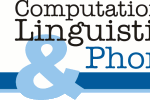Schedule
| Date | Topic | Speaker | References | Slides |
|---|---|---|---|---|
| 24.04. | Introduction | Manfred Pinkal | – | Introduction.pdf |
| 01.05. | Holiday | |||
| 08.05. | Entailment, Deduction, Theorem Proving | Manfred Pinkal | Blackburn&Bos 2003 | Logical_Deduction.pdf |
| 15.05. | Textual Entailment | Manfred Pinkal/all | Monz&de Rijke 2001 | |
| 22.05. | Shallow Methods for RTE Introduction to RTE 1 |
Michael Wirth | Dagan&Glickman 2005 | Shallow_Methods.pdf |
| 29.05. | Abduction for deep linguistic reasoning | Anna Mündelein | Hobbs et al. 1993, Raina et al. 2005 | Abduction.pdf |
| 05.06. | Classical linguistic Inference I | Alexander Volokh | Gardent&Konrad 2000 | Linguistic_Inference.pdf |
| 12.06. | Paraphrases for textual inference | Olga Kukina | Lin&Pantel 2001, Bazilay&Lee 2003, Bannard et al. 2005 | Paraphrases.pdf |
| 19.06. | Harvesting semantic information for RTE | Marco Pennacchiotti | ||
| 26.06. | Cancelled (ACL) | |||
| 03.07. | Classical linguistic Inference II | Michaela Regneri | Koller et al. 2004 | Linguistic_Inference_II.pdf |
| 10.07. | Polarity information for RTE | Teresa Herrmann | Nairn et al. 2006 | Polarity.pdf |
| 17.07. | Discussion | Zaenen et al. 2005, Manning 2006 | ||
Possible topics for student presentations
Prototypical Alternative Approaches
- Shallow Methods for RTE Monz&de Rijke 2001, Jijkoun&de Rijke 2005, Kouylekov&Magnini 2005, Herrera et al. 2005
- Abduction for deep linguistic reasoning and RTE Hobbs et al. 1988, Hobbs et al. 1993, Raina et al. 2005
Recent work in "classical" linguistic inference
- Linguistic Inference using Description Logic Koller et al. 2004
- Linguistic Inference with Model Generation Gardent&Konrad 2000
- Linguistic Reasoning through distributed theorem proving Bos 2001, Blackburn et al. 1998
Deep linguistic information for RTE
- Computing polarity of clauses Nairn et al. 2006
- Logical Reasoning for Textual Entailment Tatu et al. 2006, Bos & Markert 2006
- Do we need fine-grained logic-based specification of textual entailment? Zaenen et al. 2005, Manning 2006, Crouch et al. 2006
- Exploiting structured semantic information for Textual Inference Burchardt et al. 2005, Burchardt et al. 2006
Further Topics in RTE
- Graph Embedding Techniques for RTE
- Paraphrases as a source for textual inference Lin&Pantel 2001, Bazilay&Lee 2003, Bannard et al. 2005
Workshops relevant for the seminar topic
- ICoS: Inference in Computational Semantics
- IWCS: International Workshop on Computational Semantics, Tilburg, NL
- RTE: Recognizing Textual Entailment
RTE-1: Proceedings of the First Recognising Textual Entailment Workshop, 2005
RTE-2: Proceedings of the Second Recognising Textual Entailment Workshop, 2006
References
- Colin Bannard, Chris Callison-Burch: Paraphrasing with bilingual parallel corpora. Proceedings of the 43rd Annual Meeting on Association for Computational Linguistics. 2005. PDF, Link
- R. Barzilay, L. Lee: Learning to paraphrase: An unsupervised approach using multiple-sequence alignment. Proceedings of the 2003 Conference of the North American Chapter of the Association for Computational Linguistics on Human Language Technology - Volume 1. PS, Link
- P. Blackburn, J. Bos: Computational Semantics. Theoria 18, 27-45. 2003. PDF.
- P. Blackburn, J. Bos, M. Kohlhase, H. de Nivelle: Automated Theorem Proving for Natural Language Understanding. CADE-15 Workshop. Problem-solving methodologies with Automated Deduction, 1998. PS
- J. Bos: DORIS 2001: Underspecification, Resolution and Inference for Discourse Representation Structures. I/ICoS-3, 2001. PDF
- J. Bos, K. Markert: When logical inference helps determining textual entailment (and when it doesn't). RTE-2, 2006. PDF
- A. Burchardt, A. Frank and M. Pinkal: Building Text Meaning Representations from Contextually Related Frames - A Case Study. Proceedings of IWCS-6, 2005. PS
- A. Burchardt and A. Frank: Approximating Textual Entailment with LFG and FrameNet Frames. RTE-2, 2006. PDF
- Crouch, Karttunen, Zaenen: Circumscribing is not excluding: A response to Manning. PDF
- C. Gardent, K. Konrad: Interpreting Definites Using Model Generation. Journal of Language and Computation, 1(2), pages 193-209, 2000. PS
- J. Herrera, A. Penas, F. Verdejo: Textual Entailment Recognision Based on Dependency Analysis and WordNet, in: RTE-1, 2005
- J. R. Hobbs, M. Stickel, P. Martin, D. Edwards: Interpretation as Abduction. Proc. of ACL 1988
- J. R. Hobbs, M. Stickel, D. Appelt and P. Martin: Interpretation as Abduction. Artificial Intelligence 1993, Vol. 63, Nos. 1-2, pp. 69-142 PDF
- V. Jijkoun and M. de Rijke Recognizing Textual Entailment Using Lexical Similarity, in: RTE-1, 2005
- A. Koller, R. Debusmann, M. Gabsdil, and K. Striegnitz: Put my galakmid coin into the dispenser and kick it: Computational Linguistics and Theorem Proving in a Computer Game. Journal of Logic, Language, and Information, 2004. Link.
- M. Kouylekov and B. Magnini: Recognizing Textual Entailment with Tree Edit Distance Algorithms, in: RTE-1, 2005
- Manning: Local Textual Inference: It's hard to circumscribe, but you know it when you see it - and NLP needs it. Ms 2006. PDF
- Ch. Monz and M. de Rijke: Light-Weight Entailment Checking for Computational Semantics, in: ICoS-3 2001. PDF
- Nairn, Condoravdi, Karttunen: Computing relative polarity for textual inference. ICoS-5 2006. PDF
- R. Raina, Andrew Y. Ng and C. Manning: Robust Textual Inference via learning and abductive reasoning. Twentieth National Conference on Artificial Intelligence (AAAI). 2005. PDF
- D. Lin, P. Pantel: Discovery of inference rules for question-answering. Natural Language Engineering 7, 2001.
- Tatu, Iles, Slavick, Novischi, Moldovani: COGEX at the Second Recognising Textual Entailment Challenge. RTE-2, 2006. PDF
- A. Zaenen, L. Karttunen, R. Crouch: Local Textual Inference: can it be defined or circumscribed? ACL 2005. PDF

